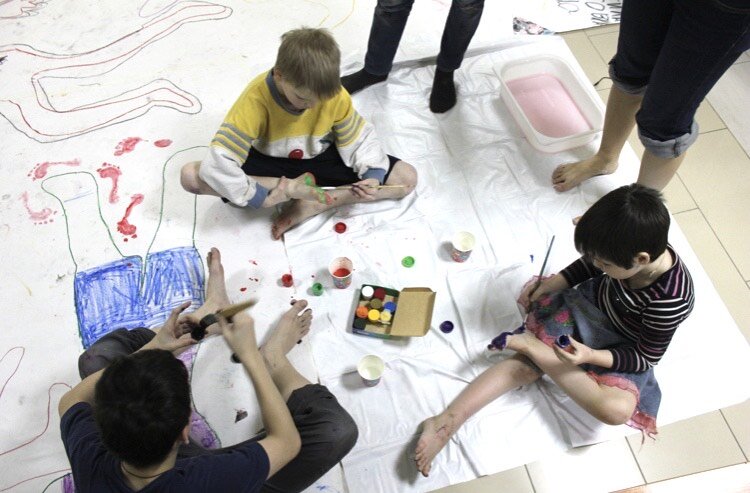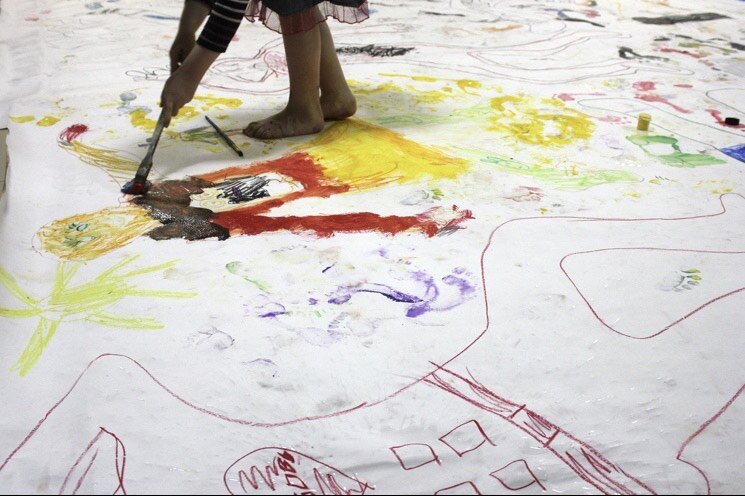Art Therapy at The Lighthouse Children's Hospice, Moscow
Critically ill children and their families desperately need Mental health support. As of September 2020, we're helping to provide art therapy at one of Russia’s largest children’s hospices - The Lighthouse Children’s Hospice in Moscow.
The hospice provides essential medical support to hundreds of terminally ill children and their families from all over the country. The Children’s Hospice Lighthouse Charity Foundation works with children and their families to help them find joy and live their life in full, despite the gravity of their challenges.
International research has shown that art therapy helps patients access hidden emotions, reduce anxiety and provides guidance to patients who may feel helpless and passive.
Knowing this, we initiated a dedicated Art Therapy Room for the children and families receiving care at the Lighthouse Hospice. We're working with our partner, the Centre for Psychology and Art Therapy ‘SAMO’ on development and delivery of this project.
Caring for a critically ill child takes over the lives of the entire family. The experience can seriously impact mental wellbeing and break down healthy family dynamics. Art therapy has proven to help families find relief from their challenging reality, uncover behaviour patterns of different family members and find ways to restore relationships.
Twice a week, a team of art therapists from Studio SAMO provide individual, family and group art therapy sessions – open to all hospice patients and their families.
Within just four months of starting the project, 68 patients, 30 siblings, and 46 parents participated in the art therapy sessions. The feedback from both the clinical team and the therapy participants was overwhelmingly positive:
“After just four sessions with Anna, the art therapist, my son’s stress-related eczema has healed.”
“I had no idea that I could engage in a creative activity with my children myself and enjoy it so much.”
“Thanks to the art therapists, this stay at the Hospice was beneficial to me, as well as my child.”
A Family Therapy Story
Luka* is the eldest sibling in the family. At a young age, Lukas lives with a terminal illness and receives care from The Lighthouse Hospice.
Coming to terms with Luka's diagnosis has been understandably tough for the whole family. At the hospice, Luka, his brother and parents were referred for family art therapy to help them process their difficult emotions together. Each family member admitted that they were struggling mentally but couldn’t put their problems into words before starting art therapy sessions.
Anna, the art therapist, initiated activities that helped the family members to identify their feelings through creative processes. In one session, Anna asked them to draw a representation of their mental wellbeing. It was clear from their drawings that the whole family was in a dark place.
Whilst taking part in a creative activity Luka’s Father, Alexander, admitted that he felt left out of the family dynamic and disconnected from both his wife and children. Working together on a large piece of artwork, the children chose to stay by their mother's side, barely interacting with their father. Seeing this situation unfold, Alexander admitted that it felt very reflective of everyday life, finally understanding and expressing how he felt.
Having the chance to explore their feelings through a different medium, the family found it easier to communicate.
The younger sibling, Stephan, also confessed that he felt as though he was missing out on a normal childhood because of everything that was happening with his brother.
The art therapist helped to uncover how the family was feeling, encouraged them to communicate and offered solutions to their problems.
Alexander and his wife left the therapy sessions motivated to spend more quality time together and work on their relationship. They also realised that despite their busy schedule caring for Luka, they needed to make time to enjoy activities with Stephan.
Our continued funding of the art therapy room will support up to 180 more terminally-ill children and their families, over the next twelve months.


